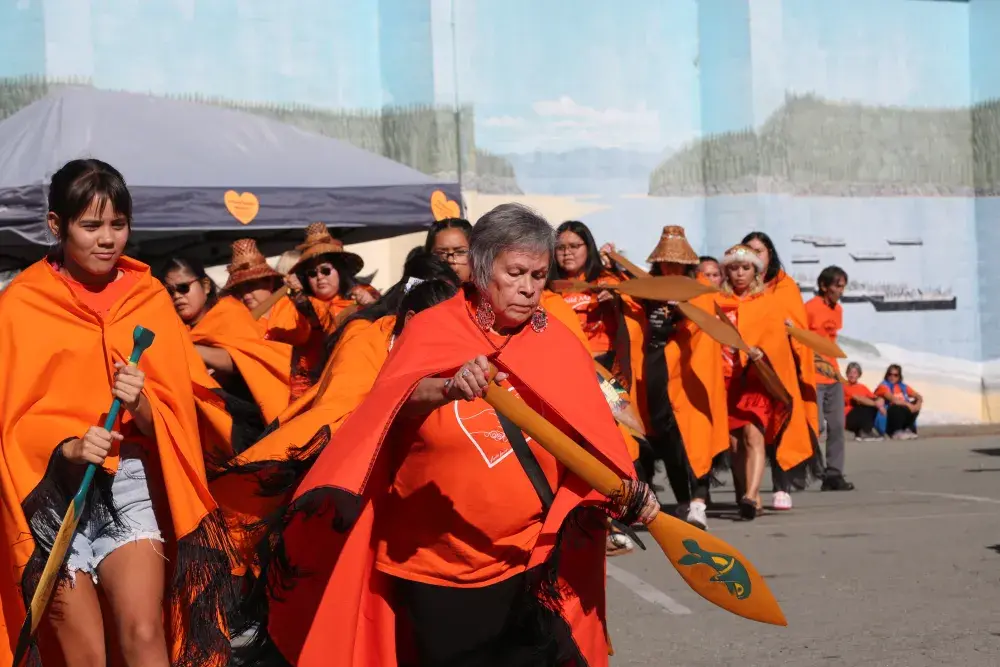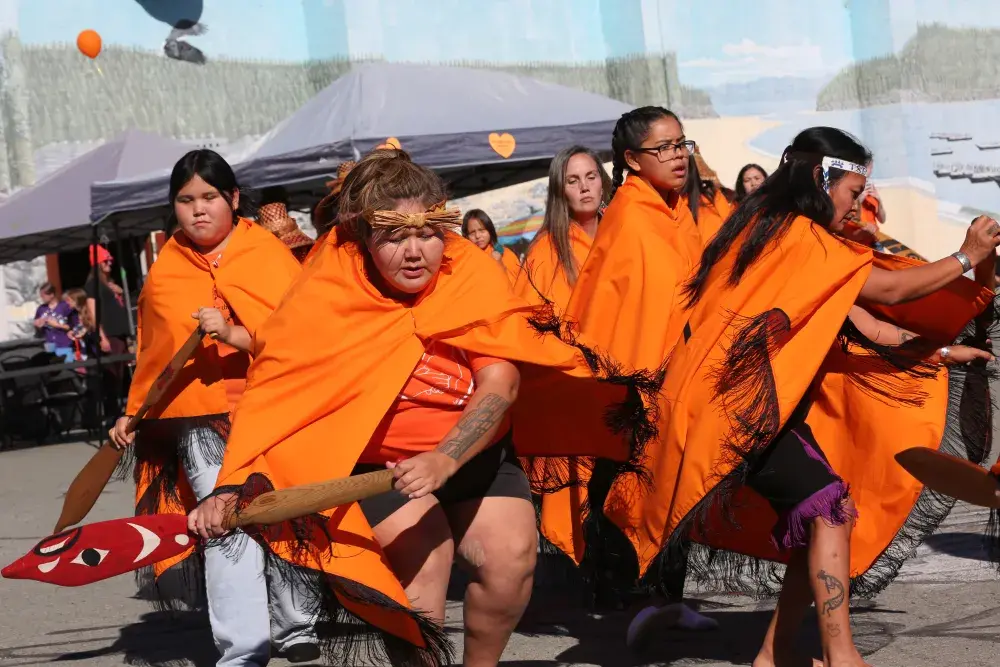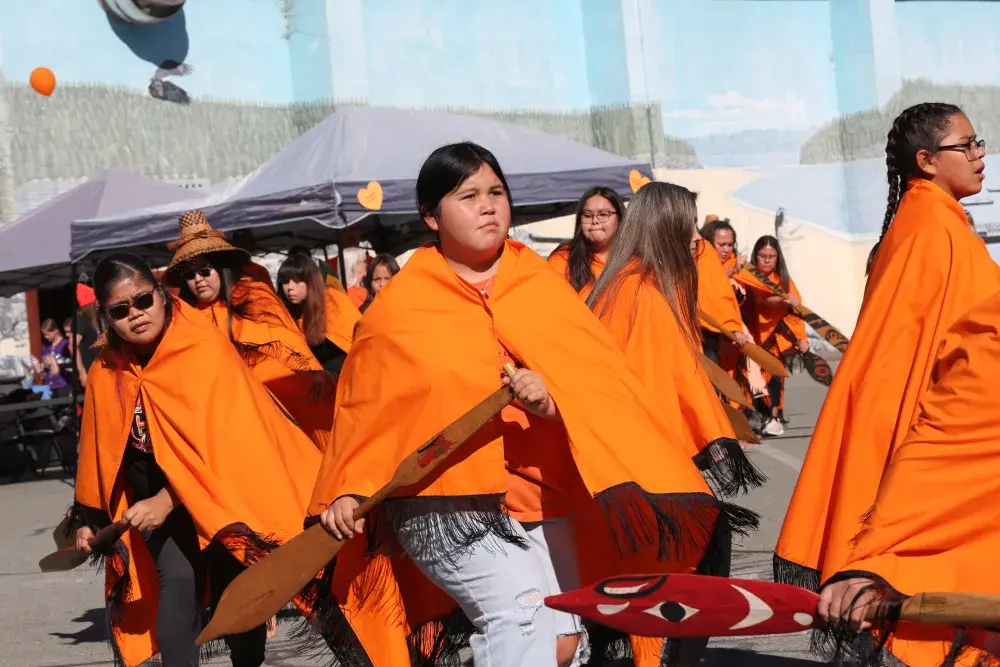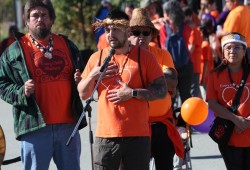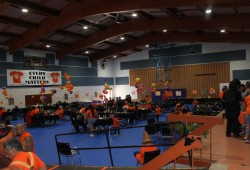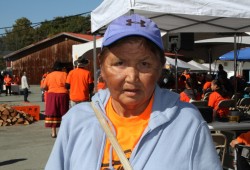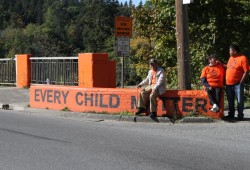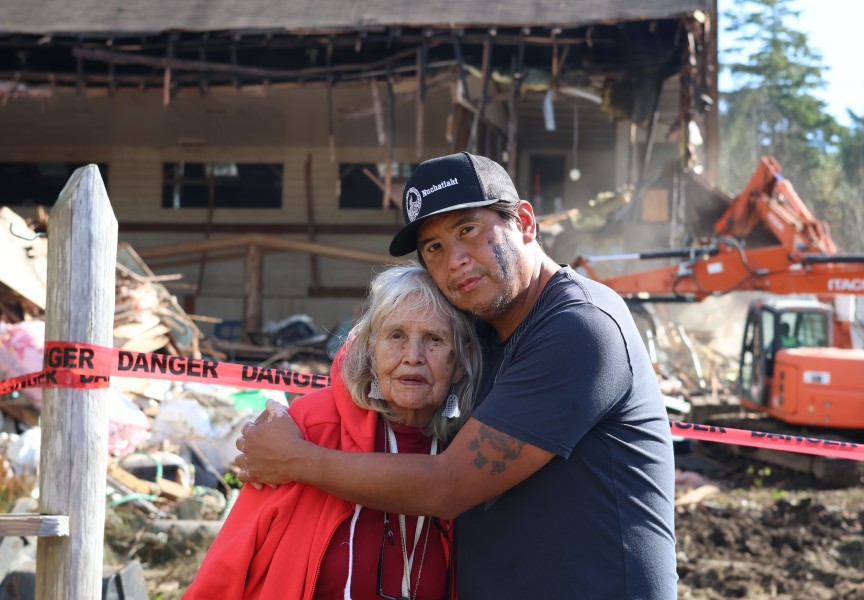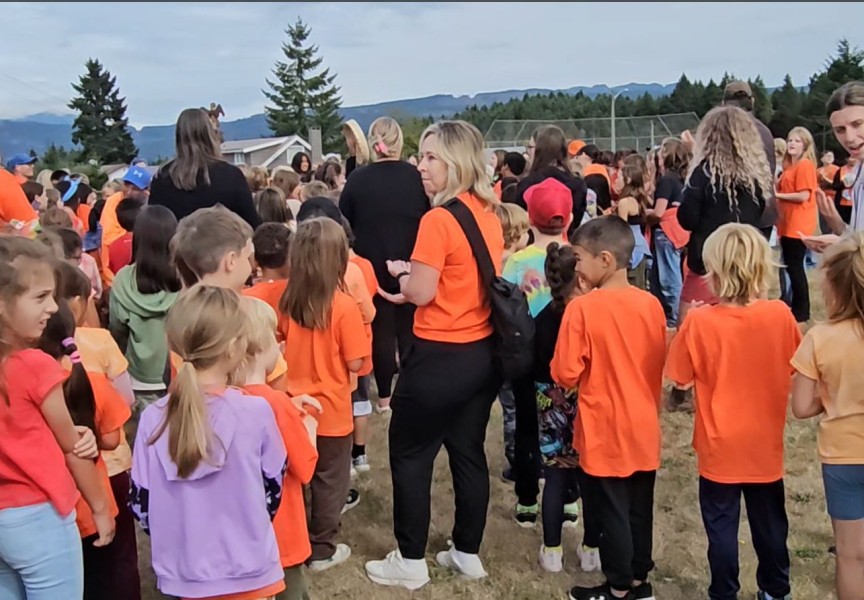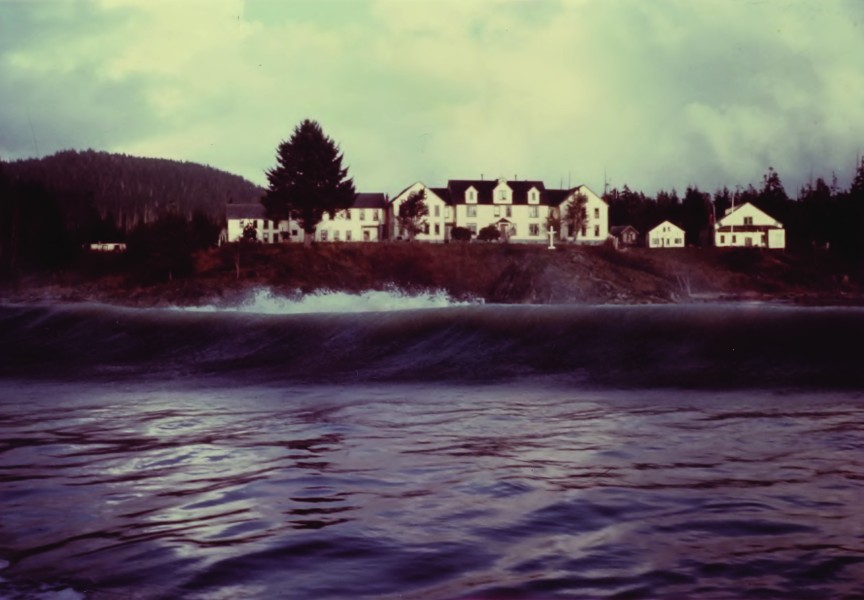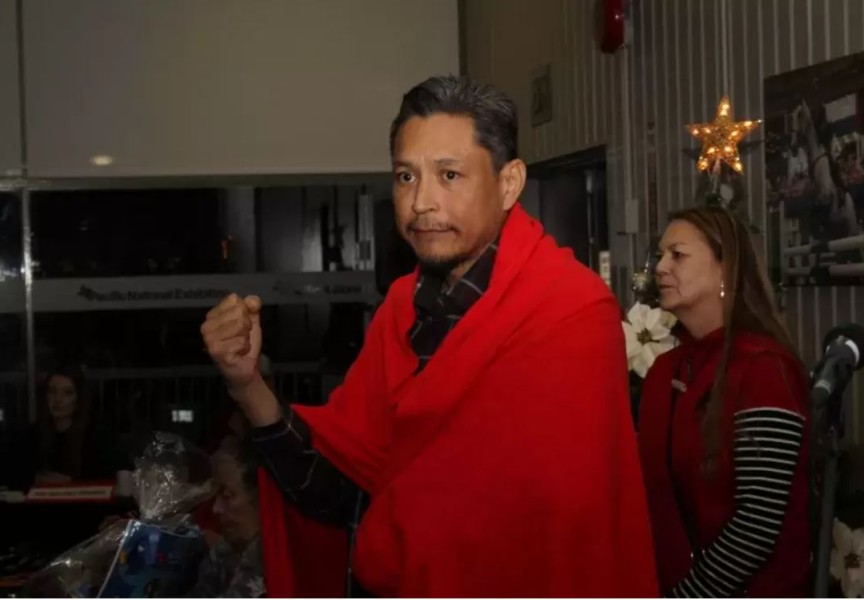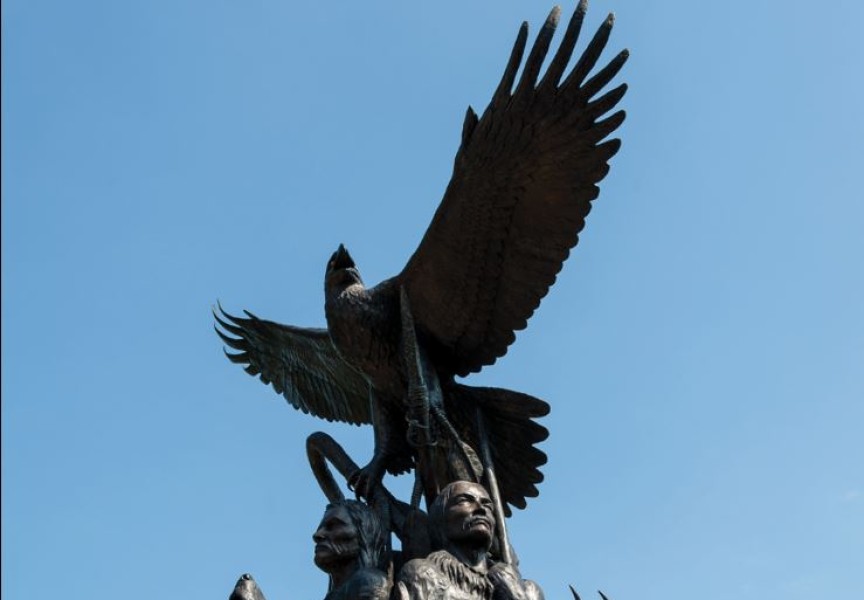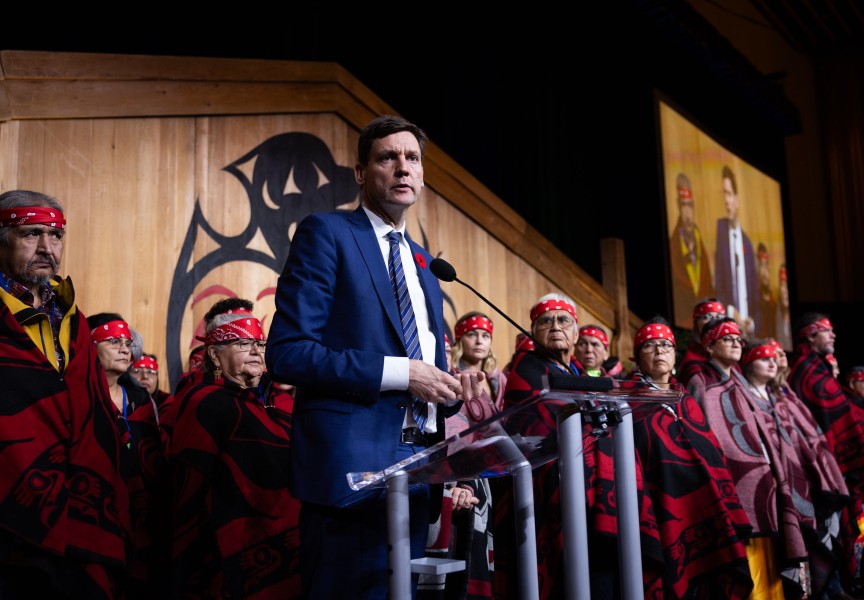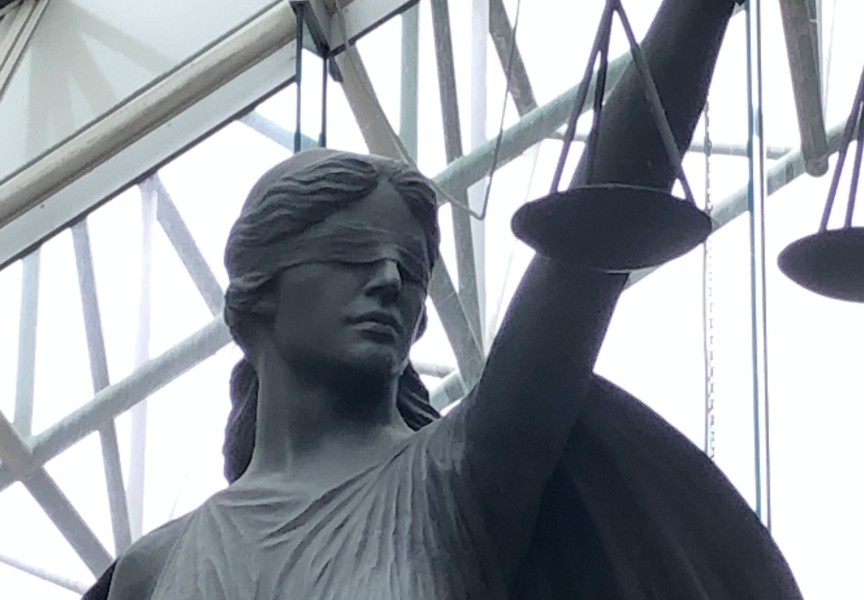A structure that still reminds former students of painful memories from the Alberni Indian Residential School could be torn down as soon as next year, with a commitment from the federal government to fund its demolition.
At a Sept. 30 event celebrating 50 years since the closure of the institution, Tseshaht Chief Councillor Ken Watts announced receiving a letter from the feds the day before, a document stating that the Government of Canada is “fully prepared and committed” to fund the tear down of the AIRS building that was once known as Caldwell Hall. The commitment comes from the Residential School Infrastructure Fund, a $100 million reserve set aside for First Nations across Canada that had the institutions on their territory.
“We’ve been lobbying for it for a long time,” said Watts of the demolition.
At an event that drew over 1,300 to the former AIRS site, Watts explained that removing the lasting reminder of the residential school is part of the First Nation’s responsibility to look after its hahoulthee - particularly for those who attended AIRS.
“We don’t like the open wound it has for you when you come up here, we don’t want that to be a trigger for you every time you see that building,” he said, addressing residential school survivors on National Day for Truth and Reconciliation. “We want this place to be a place of healing, a place to help you all move forward and heal from all the atrocities that happened.”
The Nuu-chah-nulth Tribal Council currently uses the building, and Tseshaht is preparing temporary space to accommodate workers after the demolition, thanks to the federal funding.
“They’ve actually provided us with some interim support to help move the people that are out of there now into a new space,” said Watts.
This year Tseshaht demolished the old Sproat Lake school, a tear down that cost nearly $1 million. With more lead and asbestos in a much older building, the Caldwell Hall demolition is expected to be significantly more.
On the Caldwell Hall site the Tseshaht had planned to build a multi-purpose community building, but studies have recently shown this to be unviable at the location.
“We’ve already done feasibility; we can’t do it here because it’s in the tsunami zone,” explained Watts. “We’ve got options of where it could go, we’re just finalizing the studies and where it’s feasible. The intent is to hopefully tear this down, build a multiplex that’s a gym, fitness gym, a kitchen and office space. It would be in a different location.”
In October the First Nation plans to discuss the future of Maht Mahs, a gymnasium originally built for AIRS that has since become a central gathering place, hosting generations of cultural celebrations, funerals and sporting events. Maht Mahs could either be torn down or undergo extensive renovations, said Watts.
“Most of our people received their names here, some of the most important meetings happened here,” noted the chief councillor. “But as you can see, it’s falling apart too.”
From Kitwanga to Alberni
Ottawa has also committed to fund a Tseshaht request for a celebration marking the tear down of Caldwell Hall. Watts expects to see something similar to the 2009 demolition of Peake Hall, a former AIRS student residence that was next to Caldwell Hall. On that occasion former students took part in removing pieces of the building to throw into a fire.
“There’s going to be survivors from all over the province that want to come,” said Watts. “So our commitment is to really help with some of that travel too, some of those people are going to be coming a long way.”
Although it was originally established for local Indigenous people, AIRS eventually took in children from over 70 First Nations across the province. Dolly McRae came from Hazelton in west-central B.C., where she was at a tuberculosis hospital for three years before attending the Alberni residential school for several years over her childhood and adolescence. McCrae originally came from Kitwanga and is the daughter of a Gitxsan chief, an honour that was fortunately impressed upon the residential school staff during her time at the institution.
“The principal used to invite me to babysit his grandchildren,” said McCrae, who remained in the Tseshaht community for 30 years after finishing at the school. “One day I peeked around, and there was lots of valuable stuff there. He trusted me.”
But not all AIRS students were so fortunate, and as stories gradually emerged after its closure the institution gained a notorious reputation for the predatory behavior of adults working at AIRS. In the 1990s former staff were criminally convicted, and evidence from the Alberni school led BC Supreme Court Justice Douglas Hogarth to declare in his ruling that “the Indian residential school system was nothing more than institutionalized pedophilia.”
Healing is a daily job
Reconciliation with the past is a deeply personal matter for Alice George, who started attending the Alberni Indian Residential School at the age of 15, while the institution was in the twilight of its operations in the late 1960s. Over time she became aware that several faculty members at the school were preying on children there, and for many years she was silent about the abuse she suffered at AIRS – a repression that caused her to drink heavily between the ages of 20 and 30.
“I was so scared of people,” recalls George. “I couldn’t speak to people, I couldn’t communicate, so I had to have a drink to do that.”
No one spoke about the abuses that occurred at AIRS, but George stresses that this wasn’t limited to residential schools. Domestic abuse was prevalent while she grew up in Opitsaht, a foundational breakdown within families that she attributes to generations of assimilation through the residential school system. George’s parents both went to the Christie Indian Residential School on Meares Island.
“Everything comes from the residential school. Molesters, incest molesters, pedophiles, rapists,” she said. “It’s hard to talk about. That’s why our people are so messed up. We’re all against each other.”
George sees these problems continuing in First Nations communities, as the pain and abuse has been transferred through generations to the great grandchildren of residential school survivors.
“I wasn’t taught how to be a parent. My parents weren’t either,” she reflected. “I understand that now, but it’s still hard to live through every day, trying to be a better person and just be happy.”
George didn’t even become aware of childhood abuse she suffered from a family member until decades later.
“I never remembered that until I was in my late 40s or early 50s,” she said. “I started to have dreams, I started to have the knowledge that something is wrong, and I got mad at myself. I blamed myself for everything bad that happened in my life.”
Now in her 60s, healing is a daily job for the AIRS survivor, recognizing what happened to her all those years ago. A critical part of this process is being open about the abuse.
“I do a lot of writing…I used to go out and speak at women’s groups,” said George. “We were trained to shut up, don’t tell, so everything is stuck in here. I live it, but I work every day to try and be better.”
A memorial is being planned by the Tseshaht First Nation, listing all students who attended the Alberni Indian Residential School, including those who died there. So far over $100,000 has been raised for this project through private and business donations.


